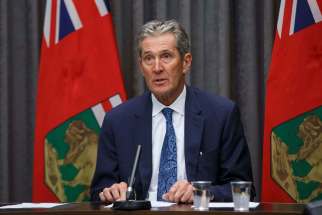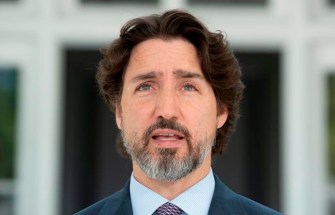Paid sick leave plan deserves support
Read this article for free:
or
Already have an account? Log in here »
To continue reading, please subscribe:
Monthly Digital Subscription
$0 for the first 4 weeks*
- Enjoy unlimited reading on winnipegfreepress.com
- Read the E-Edition, our digital replica newspaper
- Access News Break, our award-winning app
- Play interactive puzzles
*No charge for 4 weeks then price increases to the regular rate of $19.00 plus GST every four weeks. Offer available to new and qualified returning subscribers only. Cancel any time.
Monthly Digital Subscription
$4.75/week*
- Enjoy unlimited reading on winnipegfreepress.com
- Read the E-Edition, our digital replica newspaper
- Access News Break, our award-winning app
- Play interactive puzzles
*Billed as $19 plus GST every four weeks. Cancel any time.
To continue reading, please subscribe:
Add Free Press access to your Brandon Sun subscription for only an additional
$1 for the first 4 weeks*
*Your next subscription payment will increase by $1.00 and you will be charged $16.99 plus GST for four weeks. After four weeks, your payment will increase to $23.99 plus GST every four weeks.
Read unlimited articles for free today:
or
Already have an account? Log in here »
Hey there, time traveller!
This article was published 28/05/2020 (2042 days ago), so information in it may no longer be current.
If you’re sick, stay home.
It’s an edict that has been repeated throughout the COVID-19 crisis. And on Monday, Prime Minister Justin Trudeau announced he would work with provinces on a pandemic-related measure to make it less stressful for Canadians to do just that: a program that would ensure all workers are allowed 10 days of paid sick leave.
It’s a move that has received support from Premier Brian Pallister. In a joint statement issued Tuesday, Pallister, Yukon Premier Sandy Silver and B.C. Premier John Horgan said, “We are pleased the federal government is looking at a sick leave program that protects people and businesses, and we look forward to advancing this initiative. Paid sick leave is crucial for the safe restart of our economy.”

One could argue paid sick leave is also crucial for a healthier, more inclusive, more humane — and therefore more productive — workforce. And there is a strong argument for making some variation of this plan permanent.
Pallister seems inclined to disagree, having stated Tuesday he supports a program targeted only to the current crisis.
“I’m not interested in using the pandemic to try to create a fundamental change in the national social fabric,” he said. “What I’m trying to do here is make sure we don’t have a COVID comeback.”
That not-unexpected view notwithstanding, a broader application deserves due consideration.
Many companies do not offer paid sick leave, which leaves workers with a difficult choice: take a sick day and lose out on a shift’s (or more) pay, or come in to work sick and risk infecting co-workers, clients and customers. Pre-pandemic, plenty of seasonal colds and flus — as well as contagious infections such as strep throat — made the rounds of many an open-concept office populated by people coming to work sick.
Many service workers have had to suffer through shifts, serving food and drink while being visibly ill. And then comes what every workplace dreads: the day when multiple people call in sick and healthy workers are left scrambling.
But there’s more involved than instituting paid sick leave; workers would also need to feel they can actually use the sick leave to which they are entitled. At many workplaces, the uncompromising culture is such that taking a sick day means potentially losing out on hours, or being viewed as a less-reliable team player, which is also why some workers don’t take their allotted vacation time.
This is a rare chance to change not only policy, but perception.
Employees who have “never taken a sick day in his or her life” tend to be held up as a gold standard for a model employee, reinforcing the idea that sickness is another word for weakness. For those who live with chronic illnesses or mental illnesses, that kind of workplace culture can be particularly challenging.
This is a rare chance to change not only policy, but perception. Obviously, there are many details to work out, including how such a policy would work for small businesses, especially at a time when margins are already razor thin. But COVID-19 is not the only highly contagious illness that debilitates workers and puts others at risk. And COVID-19 is also not likely to be the last pandemic we face.
So long as workers can, and will, contract illnesses, paid sick leave would help them follow that most simple — and, in the current context, potentially live-saving — directive: if you’re sick, stay home.









